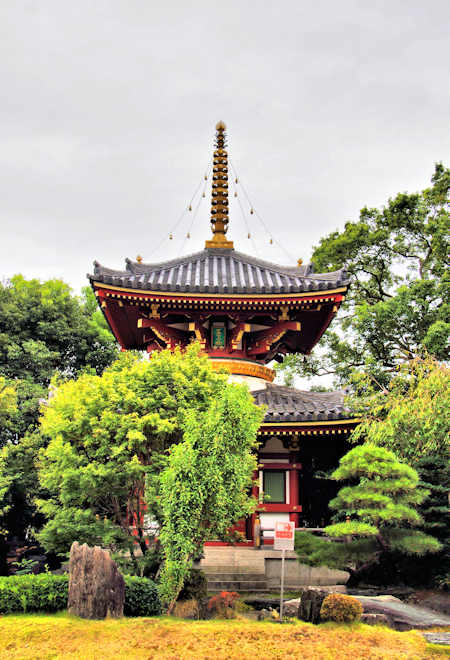Nio, the guardian statues flanking the entrance to many temples are also known as Kongorikishi, though the gates they are often found inside are called Niomon. Most Nio are made of wood, but on the Kunisaki peninsular in north Kyushu they are made of stone. This first one is one of a pair at the start of the steps leading up to Futagoji roughly in the center of the conical peninsular.
Another pair can be found within Futagoji's grounds at the bottom of the steps leading up to inner halls higher up the mountain. One of the pair always has an open mouth, Misshaku Kongo, and Naraen Kongo with his mouth closed.
Originally from India, many historians believe there is a connection between them and Greek statues of Heracles (Hercules) that may have been transmitted along the Silk Road 2,000 years ago. This Nio is at Fukiji, believed to be the oldest wooden building in Kyushu.
This modern one stands in front of a shrine, not a temple. Kunisaki was home to a unique type of Shugendo that mixed Tendai Buddhism with the "shinto" of nearby Usa Hachiman. Known as Rokugomanzan, stone was the dominant material for statues and the area is home to the biggest cliff-carvings in Japan.
This final one (for now) is at Sempukuji. Kunisaki is one of my favorite areas. many
more posts on the area can be found here. Nio are also a favorite topic of mine, and
lots more can be seen here

























